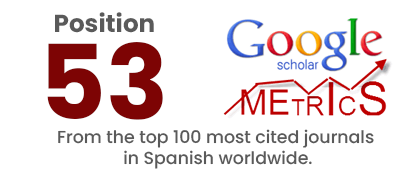A Short Comment on the use of R_adj^2 in Social Science
DOI:
https://doi.org/10.36097/rsan.v1i30.890Keywords:
r^2, r_adj^2Abstract
It is a common practice to prefer , over to assess the explainability power of a statistical regression model among social scientists, especially for one having more than one independent variables. However, this preference is not advantageous at all times because the usage of may end up in negative coefficients making them non-interpretable. A Monte Carlo simulation experiment is used to appraise the behavior of these adjusted versions of for different numbers of independent variables. It has been found that almost all of the selected adjusted version of produces negative coefficients.
Downloads
References
Ayabe, C. R. (1985). Multicrossvalidation and the jackknife in the estimation of shrinkage of the multiple coefficient of correlation. Educational and Psychological Measurement, 45(3), 445–451.
Barten, A. (1962). Note on unbiased estimation of the squared multiple correlation coefficient. Statistica Neerlandica, 16(2), 151–164.
Breusch, T. S., & Pagan, A. R. (1979). A simple test for heteroscedasticity and random coefficient variation. Econometrica: Journal of the Econometric Society, 47(5), 1287–1294.
Cameron, A. C., & Windmeijer, F. A. G. (1996). R-squared measures for count data regression models with applications to health-care utilization. Journal of Business & Economic Statistics, 14(2), 209–220.
Carter, D. S. (1979). Comparison of different shrinkage formulas in estimating population multiple correlation coefficients. Educational and Psychological Measurement, 39(2), 261–266.
Claudy, J. G. (1978). Multiple regression and validity estimation in one sample. Applied Psychological Measurement, 2(4), 595–607.
Cox, D., & Snell, E. (1989). The analysis of binary data (2nd Edition.). Chapman; Hall, London.
Darlington, R. B. (1968). Multiple regression in psychological research and practice. Psychological Bulletin, 69(3), 161-182.
Darlington, R. B., & Hayes, A. F. (2017). Regression analysis and linear models; concepts, applications and implementations. The Guilford Press, New York.
Rincon-Flores, E. G., Gallardo, K., & Fuente, J. M. D. L. (2018). Strengthening an Educational Innovation Strategy: Processes to Improve Gamification in Calculus Course through Performance Assessment and Meta-evaluation. International Electronic Journal of Mathematics Education, 13(1), 1-11.
Draper, N. R., & Smith, H. (2014). Applied regression analysis (Vol. 326). John Wiley & Sons, New York.
Durbin, J., & Watson, G. S. (1950). Testing for serial correlation in least squares regression: I. Biometrika, 37(3/4), 409–428.
Ezekiel, M. (1929). The application of the theory of error to multiple and curvilinear correlation. Journal of the American Statistical Association, 24(165A), 99–104.
Fan, X. (2001). Statistical significance and effect size in education research: Two sides of a coin. The Journal of Educational Research, 94(5), 275–282.
Glass, G. V., & Hopkins, K. D. (1996). Statistical methods in education and psychology. Needham Heights, MA, US: Allyn & Bacon.
Gujarati, D. N. (2009). Basic econometrics. Tata McGraw-Hill Education, New Delhi.
Gujarati, D. N. (2011). Econometrics by example, Palgrave MacMilillan, New York.
Helland, I. (1987). On the interpretation and use of R^2 in regression analysis. Biometrics, 43(1), 61–69.
Huberty, C. J., & Mourad, S. A. (1980). Estimation in multiple correlation/prediction. Educational and Psychological Measurement, 40(1), 101–112.
Jarque, C. M. (2011). Jarque-bera test. In International encyclopedia of statistical science (pp. 701–702). Springer, New York.
Jarque, C. M., & Bera, A. K. (1987). A test for normality of observations and regression residuals. International Statistical Review/Revue Internationale de Statistique, 55(2), 163–172.
Kennedy, E. (1988). Estimation of the squared cross-validity coefficient in the context of best subset regression. Applied Psychological Measurement, 12(3), 231–237.
Kromrey, J. D., & Hines, C. V. (1996). Estimating the coefficient of cross-validity in multiple regression: A comparison of analytical and empirical methods. The Journal of Experimental Education, 64(3), 240–266.
Kvålseth, T. O. (1985). Cautionary note about R^2. The American Statistician, 39(4), 279–285.
Leach, L. F., & Henson, R. K. (2007). The use and impact of adjusted r2 effects in published regression research. Multiple Linear Regression Viewpoints, 33(1), 1–11.
Long, J. S., & Ervin, L. H. (2000). Using heteroscedasticity consistent standard errors in the linear regression model. The American Statistician, 54(3), 217–224.
McCullagh, P. (1980). Regression models for ordinal data. Journal of the Royal Statistical Society, Ser. B, 42(2), 109–142.
Mittlböck, M., & Waldhör, T. (2000). Adjustments for r2-measures for poisson regression models. Computational Statistics & Data Analysis, 34(4), 461–472.
Montomery, D., & Morrison, D. (1973). A note on adjusting R^2. The Journal of Finance, 28(4), 1009–1013.
Nagelkerke, N. (1991). A note on a general definition of the coefficient of determination. Biometrika, 78(3), 691–692.
Newman, I., & others. (1979). A monte carlo evaluation of estimated parameters of five shrinkage estimate formuli. Multiple Linear Regression Viewpoints, 9(5), 57–74.
Olkin, I., Pratt, J. W., & others. (1958). Unbiased estimation of certain correlation coefficients. The Annals of Mathematical Statistics, 29(1), 201–211.
Pituch, K. A., & Stevens, J. P. (2015). Applied multivariate statistics for the social sciences: Analyses with sas and ibm’s spss. Routledge.
Rozeboom, W. W. (1978). Estimation of cross-validated multiple correlation: A clarification. Psychological Bulletin, 85(6), 1348.
Rozeboom, W. W. (1981). The cross-validational accuracy of sample regressions. Journal of Educational Statistics, 6(2), 179–198.
Schmitt, N. (1982). Formula estimation of cross-validated multiple correlation, Presented at the Annual Meeting of the American Psychological Association, Washington, DC..
Siddiqi, A. (2014). An observatory note on tests for normality assumptions. Journal of Modelling in Management, 9(3), 290–305.
Snyder, P., & Lawson, S. (1993). Evaluating results using corrected and uncorrected effect size estimates. The Journal of Experimental Education, 61(4), 334–349.
Stein, C. (1960). Multiple regression. in Olkin et al.(Eds.), Contributions to Probability and Statistics. Stanford: Stanford University Press.
Stevens, J. (1996). Applied multivariate analysis for the social sciences, Mahwa, New Jeresey.
Thompson, B. (1999). If statistical significance tests are broken/misused, what practices should supplement or replace them? Theory & Psychology, 9(2), 165–181.
Uhl, N., & Eisenberg, T. (1970). Predicting shrinkage in the multiple correlation coefficient. Educational and Psychological Measurement, 30(2), 487–489.
Wherry, R. (1931). A new formula for predicting the shrinkage of the coefficient of multiple correlation. The Annals of Mathematical Statistics, 2(4), 440–457.
Yin, P., & Fan, X. (2001). Estimating r 2 shrinkage in multiple regression: A comparison of different analytical methods. The Journal of Experimental Education, 69(2), 203–224.


















